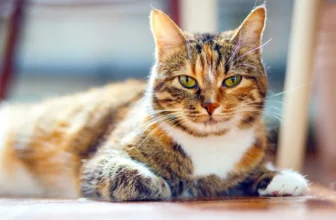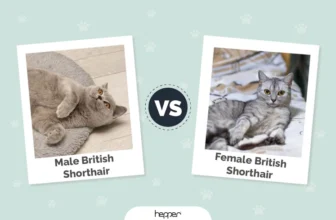As a responsible American Shorthair cat owner, finding the perfect litter box can be a perplexing task. With so many options available, the process of choosing the right litter box can be intimidating. This is where we come in, to help you make an informed decision on the best litter box options for your feline companion. From covered to self-cleaning and natural to biodegradable boxes, we’ve got you covered. Let’s explore the different types, materials, sizes, and placement of litter boxes to make sure your American Shorthair has a comfortable and clean space to do their business.
Types of Litter Boxes
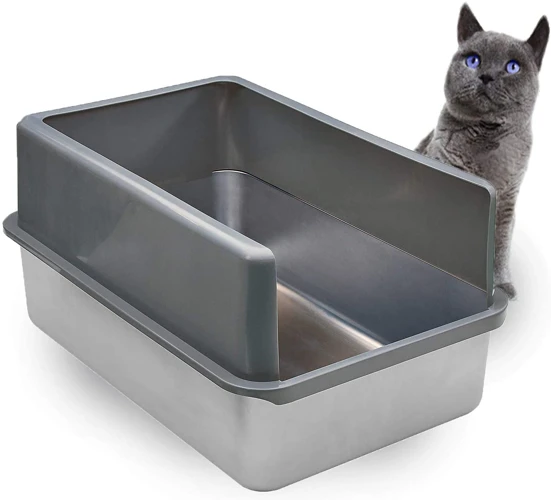
Choosing the right litter box for your American Shorthair can be a daunting task, as there are so many options available. Whether you’re a first-time cat owner or have been a cat parent for years, it’s important to understand the different types of litter boxes and which one would be best for your furry friend. Let’s take a closer look at the various types of litter boxes you can choose from and their unique features. Additionally, if you want to learn more about litter box mistakes to avoid with your American Shorthair, check out our guide to common mistakes.
1. Covered Boxes
One of the most popular types of litter boxes for American Shorthairs is the covered box. Covered boxes offer privacy for cats and help contain litter and odor. They come in various sizes, shapes, and colors, and can be made of plastic or more sustainable materials like bamboo.
However, some American Shorthairs may not like using covered boxes because they can trap odors and create a stuffy environment. Additionally, covered boxes may be difficult to clean and may not provide enough room for larger cats.
If you decide to choose a covered box for your American Shorthair, make sure to choose the right size. The box should be large enough for your cat to stand and turn around comfortably. It should also be placed in a well-ventilated area to prevent any unpleasant smell from accumulating.
To prevent litter tracking, you can place a litter mat or rug in front of the box. It is also essential to clean the box regularly to keep it odor-free and hygienic. You can use a gentle, fragrance-free cleaner to wipe down the interior and exterior of the box.
If you’re experiencing any issues with your American Shorthair using the covered box, such as inappropriate elimination, visit our helpful article on litter box troubleshooting for solutions.
Remember, it is vital to provide your American Shorthair with a litter box that meets their needs and preferences for them to use it consistently. For tips on litter box training and behavior, check out our article on litter box training with American Shorthairs or our article on litter box training tips for American Shorthair kittens.
2. Open Boxes
Open litter boxes come in various shapes and sizes, but they have one thing in common – they’re not covered, allowing your American Shorthair cat to do her business in the open. This design might seem simple, but it has its advantages, especially if your cat feels cramped or claustrophobic in a covered litter box. With an open litter box, she’ll have more space to move around and feel comfortable.
Advantages of Open Boxes:
| Advantages | Explanation |
|---|---|
| More space | Open boxes provide more freedom and space for your American Shorthair to do his business |
| Easier access | Open boxes make it easier for cats to access the litter, which is especially important for senior American Shorthairs or those with mobility issues |
| Easier maintenance | Since open boxes are easier to access and clean, they require less maintenance and are perfect for busy cat owners |
However, there are also some downsides to open litter boxes. For one, they can be messier compared to covered boxes, since there’s nothing to contain the litter and waste. Additionally, an uncovered litter box might not be ideal if you have multiple cats or a dog in the house that likes to snack on “kitty treats”.
If you’re considering getting an open box for your American Shorthair, remember that regular cleaning and maintenance is key. This means scooping the litter daily and replacing it every few weeks, depending on how many cats you have. Additionally, you should find a spot for the open box away from high-traffic areas to give your cat privacy and reduce the likelihood of accidents.
When it comes to training your cat to use an open litter box, it’s relatively easy and straightforward. Most cats will instinctively know what to do, but it might take some time for your American Shorthair to adjust to the open design if she’s used to a covered box. For more tips on training your American Shorthair to use the litter box, check out our article on how to train your American Shorthair to use the litter box.
Finally, always keep in mind that an open litter box can affect the smell of your home. To minimize odor, regular cleaning and the use of a high-quality litter can make a big difference. For more information about how to keep your American Shorthair’s litter box clean, check out our article on how to clean the litter box with your American Shorthair.
3. Top-Entry Boxes
Top-entry litter boxes are a popular option that can keep litter mess under control. These boxes have a lid on top that your cat enters through, and they are becoming increasingly popular among pet owners who are looking for a way to keep their homes tidy. The advantages of top-entry litter boxes include less litter tracking and better odor control. The litter stays inside the box, thanks to the high sides and lid, and when the cat jumps out, any loose litter on its paws stays inside.
When selecting a top-entry litter box for your American Shorthair, consider the following factors:
- Size: Make sure the size is appropriate for your cat. Your cat should be able to jump in and out of the box with ease.
- Shape: Top-entry boxes come in various shapes, including round, square, and oval. Consider the space you have and choose a shape that fits in nicely.
- Entry: Some top-entry boxes have a low entry point, while others have a higher entry point with a platform or stairs. Consider your cat’s age, size, and mobility when selecting an entry type.
- Material: Top-entry litter boxes come in various materials such as plastic, metal, and even wicker. Consider the durability, ease of cleaning, and aesthetic appeal when selecting a material type.
While top-entry litter boxes have many benefits, they may not be suitable for all cats. Some may not be comfortable entering a covered box, and others may have mobility issues that make getting in and out of the box challenging. It’s essential to observe your cat’s behavior and preferences to decide if a top-entry litter box is the right fit.
4. Self-Cleaning Boxes
Self-cleaning litter boxes are among the most popular options for cat owners who want to keep their litter box clean with minimal effort. These boxes use various mechanisms to automatically sift through litter and remove waste, leaving a clean area for your American Shorthair to use. Some of them even have odor control features, which can be especially useful in homes where litter box odor is a concern.
Advantages of self-cleaning boxes include:
- Convenience: Unlike traditional litter boxes, self-cleaning options require little to no effort from the owner to clean them on a daily basis. These boxes use sensors or timers to activate the cleaning mechanism, so it happens automatically without the need for human intervention.
- Odor control: Some models have features that reduce or eliminate unpleasant odors, such as carbon filters or deodorizers.
- Cleanliness: The automatic sifting and removal of waste makes for a cleaner litter box overall, which can also help with odor control and hygiene.
Disadvantages of self-cleaning boxes include:
- Expensive: Self-cleaning litter boxes are generally more expensive than traditional ones. The advanced technology and features they offer come at a higher price.
- Malfunctioning: Automatic litter boxes are made up of various mechanical and electronic components, which can break down or malfunction over time.
- Noise: Depending on the model, some self-cleaning boxes can be quite noisy when they activate.
- Cat preference: Some cats may be frightened or intimidated by the noise and movement of automatic litter boxes. It is important to consider your American Shorthair’s individual personality and preferences before investing in one.
When shopping for a self-cleaning litter box, you will find both electric and non-electric models available. Electronic boxes usually require electricity to operate while non-electric models are powered by gravity and rely on a simple design to sift through the litter. It’s important to consider your cat’s preferences and needs when selecting a litter box and do your research before investing in one.
Materials

As you consider the best litter box option for your American Shorthair, it’s important to also weigh the various materials that the boxes are made of. Different materials can affect not only the durability and longevity of the box, but also the comfort and preferences of your cat. Let’s take a closer look at some of the most common materials used in litter boxes.
1. Plastic Boxes
When it comes to selecting the best litter box for your American Shorthair, the material of the box is an important factor to consider. One common type is a plastic box, which is both affordable and lightweight. However, not all plastic litter boxes are created equal. Here are some key features to look for when choosing a plastic litter box:
- Durability: Look for a plastic box that is thick and sturdy, as thinner plastic can crack or break over time.
- Size: Make sure the box is large enough for your cat to comfortably use and move around in.
- Cleaning: Choose a box with smooth surfaces and minimal crevices to make cleaning easier.
- Accessibility: Many plastic boxes have high sides that can be difficult for senior cats or those with mobility issues to enter. Look for a box with a low entry point or one with a ramp to make it easier for your furry friend to use.
Plastic litter boxes can also come with additional features such as built-in odor control or easy-to-use snap-on lids. While these may be appealing, make sure they do not compromise the comfort and accessibility of your cat. Additionally, be aware that plastic litter boxes can absorb odors over time and may need to be replaced more frequently than other materials.
When choosing a plastic litter box, prioritize durability, size, and cleaning ease, while also considering any additional features that may benefit your cat’s use and your own maintenance needs.
2. Stainless Steel Boxes
When looking for a durable and long-lasting litter box option, stainless steel boxes can be a great choice for American Shorthair owners. Here are a few reasons why:
- Hygienic: Stainless steel is non-porous and very easy to clean, making it an ideal material for litter boxes. It does not absorb unpleasant odors or bacteria, reducing the need for frequent deep-cleaning.
- Durable: Stainless steel has a longer lifespan compared to plastic litter boxes and can withstand frequent use and cleaning. It also doesn’t crack or absorb liquids like ceramics, so it’s highly resistant to damage.
- Large Size Options: For larger American Shorthairs, stainless steel litter boxes can offer ample room for movement during litter box use.
To find the best stainless steel litter box for your American Shorthair, consider purchasing one with a low entry design to accommodate cats of all ages and mobility levels. Additionally, find one with high walls to prevent any litter scatter and messes. A litter box with both of these features, plus a sturdy build, can be a great investment for long-term use.
3. Ceramic Boxes
Ceramic litter boxes are a great option for those who want a litter box that is both stylish and functional. They are typically heavier and more durable than plastic options, which means they are less likely to tip or crack. Additionally, ceramic is non-porous, which means it is less likely to retain odors than other materials. That being said, there are a few things to keep in mind before purchasing a ceramic litter box.
Advantages
One of the biggest advantages of ceramic litter boxes is their durability. They are much less likely to crack or break than plastic options, which means they can last a long time with proper care. Additionally, ceramic is non-porous, which means it doesn’t absorb liquids and therefore is less likely to hold onto odors. Ceramic is also a great option for those who want a litter box that looks stylish. Ceramic boxes can come in a variety of shapes, colors, and designs, which means they can be easily integrated into any home décor.
Disadvantages
One of the biggest disadvantages of ceramic litter boxes is that they tend to be more expensive than plastic options. They can be quite heavy, which means they may be difficult to move around or clean. Additionally, because ceramic is a more delicate material, it’s important to handle it with care to avoid cracks or chips. Finally, it’s important to note that ceramic litter boxes may not be the best option for those with multiple cats or larger cats, as they may not provide enough space.
Caring for Your Ceramic Litter Box
To keep your ceramic litter box in good condition, it’s important to follow some basic care and maintenance tips. First and foremost, avoid dropping or hitting the box, as this can cause cracks or chips. Additionally, clean the box regularly with a mild soap and warm water to avoid buildup or odors. It’s also important to use a litter scoop made of a softer material, such as plastic, to avoid scratching the surface of the box.
Recommended Ceramic Litter Boxes
If you’re looking for a high-quality ceramic litter box, consider the following options:
| Brand/Model | Dimensions | Price |
|---|---|---|
| Petmate Booda Dome Clean Step Litter Box | 22.5 x 22.5 x 19 inches | $49.99 |
| KittyGoHere Senior Cat Litter Box | 24 x 20 x 5 inches | $89.99 |
| Behrens High Grade Steel Scoop-Shovel Litter Box | 17.5 x 14 x 6 inches | $22.54 |
Ceramic litter boxes are a great option for those who want a durable and stylish litter box. With proper care and maintenance, a ceramic litter box can last for years and provide your furry friend with a comfortable, odor-free place to do their business.
4. Natural and Biodegradable Boxes
For the environmentally conscious cat owner, natural and biodegradable litter box options are an excellent choice. These eco-friendly boxes are made from materials such as recycled paper, pine, wheat, or corn, making them a sustainable alternative to traditional litter boxes. Not only are they biodegradable and compostable, but they also tend to be less dusty and more pleasant smelling than their clay counterparts.
Here are some popular natural and biodegradable litter box options:
- Recycled Paper: Made from recycled newspaper or cardboard, these litter boxes are highly absorbent and help control unpleasant odors.
- Pine: Pine litter boxes are typically made from sawdust and shavings and have a naturally fresh scent. They are also highly absorbent and clump well for easy scooping.
- Wheat: Litter boxes made from wheat are lightweight and clump well, but they can be slightly less absorbent than other options.
- Corn: Corn litter boxes are also lightweight and highly absorbent. They are also flushable, making cleanup a breeze.
When choosing a natural or biodegradable litter box, it’s important to keep in mind your cat’s preferences and habits. Some cats may be more reluctant to use a litter that has a different texture or scent than what they’re used to. Additionally, some of these litter boxes may be more expensive than traditional options, so make sure to consider your budget as well.
Natural and biodegradable litter box options are an excellent choice for cat owners who are looking for a more sustainable and eco-friendly option. They provide an easy way to reduce waste and minimize your carbon footprint without sacrificing on quality or performance.
Size and Placement
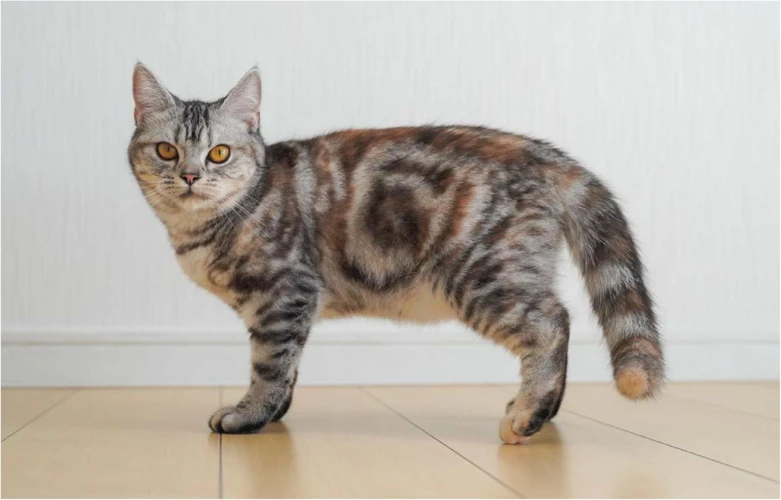
As a cat owner, finding the right litter box for your American Shorthair is important. Part of that consideration includes thinking about the size and placement of the litter box. It may seem like a straightforward decision, but there are a few factors to consider. After all, your cat’s comfort and convenience should be prioritized, so let’s take a closer look at what you should keep in mind when choosing the size and placement of your cat’s litter box.
1. Choosing the Right Size
When it comes to choosing the right size litter box for your American Shorthair, there are a few factors to consider. One of the most important is the size of your cat, as well as their individual habits. Here’s a handy table to help you determine the appropriate size litter box for your furry friend:
| Dimensions | Cat Size | Number of Cats |
|---|---|---|
| 16″ L x 12″ W x 3″ H | Small kittens, senior cats, or cats with mobility issues | 1 |
| 18″ L x 14″ W x 5″ H | Small to medium-sized cats | 1 |
| 22″ L x 16″ W x 6″ H | Large cats | 1 |
| 24″ L x 18″ W x 10″ H | Multiple small to medium-sized cats | 2-3 |
| 28″ L x 20″ W x 12″ H | Multiple large cats | 2-3 |
It’s important to note that the above measurements are just general guidelines. You’ll need to take into account your cat’s specific size and habits. For example, if your cat likes to dig and scatter litter, you may need a deeper box with higher sides to prevent litter from getting everywhere.
Additionally, while a larger litter box may be appropriate for multiple cats, it’s important to make sure there are enough boxes available for each cat. As a general rule, you should provide at least one litter box per cat, plus an extra box if you have multiple cats.
By taking the time to choose the appropriate size litter box for your American Shorthair, you can help ensure their comfort and prevent any unnecessary messes.
2. Finding the Best Spot
Finding the best spot for your American Shorthair’s litter box is crucial to ensure their comfort and willingness to use it. Here are some tips to help you find the right location:
- Privacy: Cats prefer to do their business in private, away from prying eyes and noises. Place the litter box in a quiet and secluded spot, such as a spare room or corner of your bathroom.
- Accessibility: Make sure the litter box is easily accessible for your cat. Avoid placing it in a high-traffic area or in confined spaces that might make it hard for your pet to get in and out.
- Away from food and water: Cats are naturally clean animals, so they prefer to keep their food and water sources away from their toileting area. Keep the litter box far from their feeding bowls.
- Avoids obstructions: Ensure your cat has enough space around the litter box to move freely and comfortably. Avoid placing it near obstacles or furniture that might make it hard for your pet to squat properly.
- Multiple boxes: If you have more than one cat, provide multiple litter boxes to avoid any territorial disputes or competition between your cats.
Remember to observe your cat’s behaviour and preferences to determine if the litter box placement is ideal. Some cats are pickier than others and may need a little experimentation before they feel comfortable with their new litter box location. By considering their needs and personality, you can ensure your American Shorthair’s litter box is optimally placed for their comfort and convenience.
Maintenance
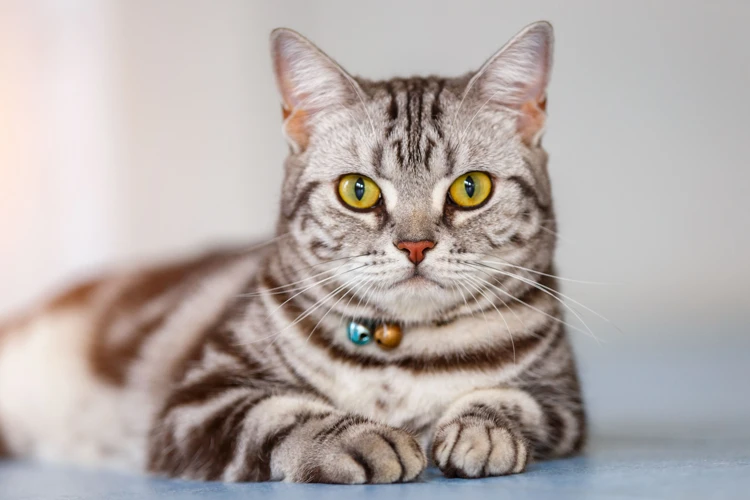
Keeping your American Shorthair’s litter box clean is essential for their health and well-being. Neglecting the cleanliness of their litter box can lead to diseases and other health problems. Maintenance involves more than just scooping out the waste. From cleaning the litter box to changing the litter, there are important steps you should follow to make sure your cat always has a hygienic place to do their business. Here are some tips to help you stay on top of your cat’s litter box maintenance.
1. Cleaning the Litter Box
Keeping your American Shorthair’s litter box clean is essential for their health and wellbeing. Without proper maintenance, your cat may refuse to use their litter box or could develop health issues. Here are some tips for cleaning your cat’s litter box:
| Step | Instructions |
|---|---|
| 1. | Put on gloves and a mask. Cleaning a litter box can be messy, and you want to protect yourself from any potential harmful bacteria or viruses. |
| 2. | Remove any solid waste from the litter box with a scoop. Discard the waste in a plastic bag and tie it securely. Avoid flushing cat litter down the toilet as it can cause blockages. |
| 3. | Pour some hot water and a small amount of dish soap into the litter box. Scrub the sides and bottom of the box using a brush or sponge. Rinse thoroughly with water. |
| 4. | Dry the litter box with a towel or let it air dry before putting in fresh litter. |
Cleaning your cat’s litter box regularly can help prevent the buildup of bacteria and odors, making the litter box more inviting for your cat. It is recommended to clean the litter box at least once a day, but some cats may require more frequent cleaning. By following these simple steps, you can ensure that your American Shorthair has a clean and hygienic place to do their business.
2. Changing the Litter
Changing the litter is an essential part of litter box maintenance. It’s recommended to change the litter at least once a week for one cat, and more frequently for multiple cats or if your cat has health issues. The type of litter you use will determine how often it needs to be changed.
Here’s a table to help you understand how often different litter materials should be changed:
| Litter Material | Frequency of Change |
|---|---|
| Clay litter | Once a week |
| Clumping litter | Every 2-3 days |
| Wood pellet litter | Every 2-3 days |
| Recycled paper litter | Every 2-3 days |
| Crystal litter | Once a month |
You should also regularly scoop out any clumps or solid waste in the litter box daily. This helps prevent odor buildup and keeps the litter fresher longer. When changing the litter, it’s important to thoroughly clean the litter box with soap and water and dry completely before adding fresh litter. Litter box liners can make the process of changing the litter easier, but be sure to use a liner that fits properly and doesn’t tear easily.
Remember, clean litter boxes are essential for your American Shorthair’s health and happiness. A well-maintained litter box will also help prevent common litter box problems such as inappropriate elimination and odor control.
3. How Often to Clean
Maintaining cleanliness of the litter box is crucial for the hygiene and health of your furry friend. You should clean the box frequently to ensure that no bacteria or unhealthy substances build up. Here are some tips to help you determine how often to clean the litter box:
- Observation: The frequency of cleaning depends on several factors such as the number of cats in the household, their age, dietary habits, and health conditions. As a pet owner, you should observe your cat’s behavior. If you notice that your American Shorthair is spending more time scratching the litter than usual, it might be time for a clean-up.
- Cat’s Preference: Some cats are picky when it comes to cleanliness. They may refuse to use a dirty litter box, and instead, find alternative places to eliminate. To avoid this, clean the box at least once a day.
- Litter Type: The frequency of cleaning also depends on the type of litter you are using. If you use clumping litter, the box needs to be cleaned more often. Non-clumping litter doesn’t require daily cleaning, but it should still be done every few days.
- Number of Cats: If you have more than one cat, you need to increase the frequency of cleaning. It’s recommended that you add an extra litter box for each additional cat you have.
- Poorly Cats: If your cat is suffering from diarrhea or any other gastrointestinal illnesses, you need to clean the box more often than usual. Not only will it help keep your cat healthy, it will also help keep your home smelling clean.
By following the tips above, you will be able to determine the frequency of cleaning the litter box for your American Shorthair. Remember that maintaining a clean litter box not only helps keep your cat healthy, it also helps to eliminate unpleasant odors in your home.
Common Litter Box Problems and Solutions
One of the biggest challenges of having a cat is dealing with their litter box. While litter boxes are necessary for the health and happiness of our feline friends, it’s no secret that they can also bring about some common problems. From litter tracking to odor control to inappropriate elimination, it can be frustrating to deal with these issues on a daily basis. But don’t worry, there are solutions to these problems! Let’s take a look at some of the most common litter box problems and how to solve them.
1. Litter Tracking
Litter tracking is a common problem for every cat owner. It is when litter particles get scattered around the litter box and into the surrounding environment. You don’t want litter all over your home, and neither does your American Shorthair. That’s why it’s important to choose a litter box that reduces tracking.
Here are some of the best litter box options to reduce litter tracking:
| Litter Box Type | Why it Reduces Tracking |
|---|---|
| Covered Boxes | They contain the litter and particles from spreading outside the box. |
| Top-Entry Boxes | Cats have to jump in and out of the box, which shakes off litter particles that would otherwise get tracked out. |
| Self-Cleaning Boxes | They remove waste and litter soiled particles, which reduces tracking issues. |
Aside from choosing the right litter box, there are other ways to reduce tracking. One way is to place a litter mat outside the box to catch any particles that fall off your cat’s paws. You can also try a high-sided litter box, which can help contain the litter.
Here are some additional tips to keep litter tracking at a minimum:
- Sweep or vacuum the area around the litter box daily to prevent litter from building up.
- Use a heavier litter that doesn’t scatter as easily.
- Keep the litter box in a low-traffic area to prevent accidental bumping or stepping on the litter box.
- Consider using a litter box enclosure to disguise the litter box and reduce tracking even further.
By following these tips and choosing the right litter box for your American Shorthair, you can reduce litter tracking and keep your home cleaner and more pleasant for both you and your cat.
2. Odor Control
Keeping your American Shorthair’s litter box smelling fresh and clean can be a challenge, but there are several options available for odor control. Here are some effective methods:
- Use odor-absorbing litter: Choosing a litter made with activated charcoal, baking soda, or other odor-absorbing materials can help absorb and neutralize unpleasant smells. These types of litter are specially formulated to control tough odors and can make a big difference in the overall smell of your home.
- Clean the litter box regularly: An unclean litter box can quickly create an unpleasant odor. Remove clumps and waste daily and completely change the litter at least once a week. Consider adding an odor-neutralizing spray to the litter box after cleaning to freshen the air.
- Use an air purifier: An air purifier can help remove odors and allergens from the air. Place it near your cat’s litter box for maximum effect. These air purifiers are available in a variety of sizes, so you can choose one that meets the needs of your home.
- Use baking soda: Sprinkling baking soda in the litter box can help absorb and neutralize odors. Be sure to choose a baking soda that is unscented to avoid overwhelming your cat’s sensitive nose.
- Change the location of the litter box: Sometimes, the location of the litter box can contribute to odors in your home. Try moving the litter box to a less-trafficked area of your home or a well-ventilated area.
By using one or more of these methods, you can effectively control odor in your American Shorthair’s litter box and keep your home smelling fresh and clean.
3. Inappropriate Elimination
Inappropriate elimination is a common problem among American Shorthair cats. If your cat is not using the litter box, it could be because of several reasons such as medical issues, stress, and improper litter box placement or maintenance. Here are some common causes and solutions for inappropriate elimination:
| Reasons | Solutions |
|---|---|
| Medical issues: If your American Shorthair suddenly stops using the litter box, consult a veterinarian to rule out any underlying medical issues such as urinary tract infections, bladder problems or gastrointestinal issues. | Ensure regular vet checkups for your cats and provide medical attention if required. |
| Stress or anxiety: Cats can become stressed due to changes in their environment, such as a new pet, family member, or rearrangement of furniture. | Provide your cat with a quiet and calm environment. Ensure that there is enough space and privacy for your cat to use the litter box. Additionally, try to maintain a routine as much as possible to minimize stress. |
| Dirty litter box: Cats are creatures of habit, and if their litter box is not cleaned regularly, they may start to eliminate outside the box. | Clean the litter box at least once a day and replace the litter every two to three weeks. If you have multiple cats, have individual litter boxes for each cat, and ensure that they are placed in separate areas. |
| Unappealing litter box: Cats may avoid using the litter box if it is too small, or if the litter is scented or has rough texture. | Ensure that the litter box is large enough for your cat. Choose unscented, fine-textured, and clumping litter for your cat. Avoid heavily perfumed litter, as your cat may find the scent overwhelming. |
| Territorial or marking behavior: Cats urinating outside the litter box can be a sign of marking behavior. | Consult a veterinarian and a cat behaviorist to address the underlying causes of such behavior. In some cases, neutering or spaying your cat can reduce territorial marking. Ensure that your cat has enough toys, scratching posts and climbing activities to keep them occupied. |
| Location: The location of the litter box can play a significant role in a cat’s choice to use it. The litter box may be too far away from your cat’s favorite spot, or the litter box may be in a high-traffic area, causing stress and discomfort to your cat. | Place the litter box in a quiet and private location, away from your cat’s feeding area. Ensure that the location is easily accessible to your cat. Additionally, avoid placing the litter box near noisy appliances such as a washing machine, as the noise can scare your cat. |
Remember, if your American Shorthair Cat is not using the litter box appropriately, be patient, persistent, and consistent in the changes you make until the problem is resolved. Also, don’t punish your cat for inappropriate elimination as it can cause further stress and confusion.
Conclusion
In conclusion, choosing the right litter box for your American Shorthair can be a daunting task, but with the information presented here, you should be able to make an informed decision. Remember that the type, material, size, and placement of the litter box play a crucial role in the cat’s litter box habits and overall health.
When it comes to type, consider your cat’s preferences and habits. Covered boxes are great for privacy-conscious cats, while open boxes are better for those who like a clear view of their surroundings. Top-entry boxes can help reduce litter tracking, and self-cleaning boxes can save you time and effort.
In terms of materials, plastic boxes are affordable and widely available, but they can absorb odors and scratch easily. Stainless steel boxes are sturdy, non-porous, and easy to clean but can be more expensive. Ceramic boxes are durable and attractive but can be heavy and breakable. Natural and biodegradable boxes offer an eco-friendly alternative but can be pricey and less effective in controlling odors.
When it comes to size and placement, take your cat’s size into account and choose a box that is large enough for them to turn around and dig comfortably. Place the box in a quiet and accessible area, away from their food and water bowls, and make sure there are multiple boxes for multiple cats.
Maintenance is crucial for keeping the litter box clean and fresh. Clean the box regularly, change the litter frequently, and monitor your cat’s litter box habits for signs of illness or discomfort.
If you encounter any common litter box problems such as litter tracking, odor control, or inappropriate elimination, don’t panic and try to find a solution that works for you and your cat. There are many products and methods available, from litter mats and sprays to behavioral training and medical interventions.
Overall, choosing the right litter box for your American Shorthair requires some research, patience, and trial-and-error. But with the right mindset and the right information, you can provide your furry friend with a comfortable and healthy litter box experience.
Frequently Asked Questions
1. How often should I clean the litter box?
You should clean the litter box at least once a day to ensure a clean and sanitary environment for your American Shorthair.
2. What type of litter is best for American Shorthair cats?
Clumping litter made from natural materials, such as clay or wood, is a good option for American Shorthair cats.
3. Do American Shorthair cats prefer covered or open litter boxes?
Many American Shorthair cats prefer open litter boxes so they can easily see their surroundings while using the box.
4. Can I place the litter box in a high-traffic area of my home?
No, it’s best to place the litter box in a quiet and low-traffic area of your home to provide privacy and reduce stress for your cat.
5. How often should I replace the litter box?
You should replace the litter box every 6-12 months to ensure it remains sturdy and secure for your American Shorthair.
6. What should I do if my American Shorthair is not using the litter box?
You should consult with your veterinarian to rule out any underlying medical conditions. If there are no medical issues, try changing the litter or the location of the box.
7. Can I use scented litter for my American Shorthair?
No, it’s best to avoid scented litter as it may irritate your cat’s respiratory system.
8. Should I use a self-cleaning litter box for my American Shorthair?
If your American Shorthair is comfortable with the sounds and movements of a self-cleaning litter box, it can be a convenient option. However, some cats may be frightened by the noises and avoid using the box.
9. What should I do if my American Shorthair is tracking litter outside of the box?
You can try placing a mat or rug underneath the litter box to catch any litter that is tracked out. You can also consider using a litter box with higher sides.
10. How can I eliminate odor from the litter box?
You can eliminate odor from the litter box by using a high-quality litter that is designed to absorb odors, scooping the litter daily, and cleaning the box regularly with soap and water.






